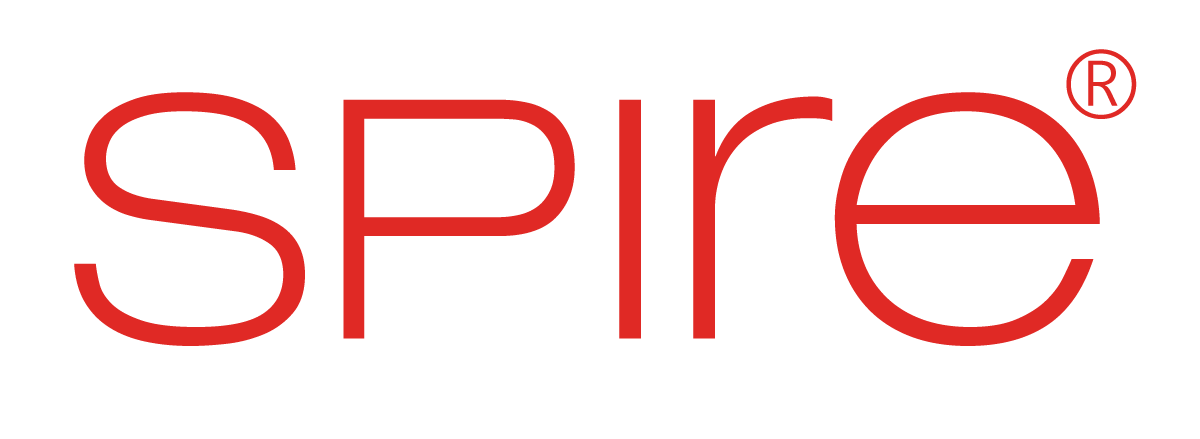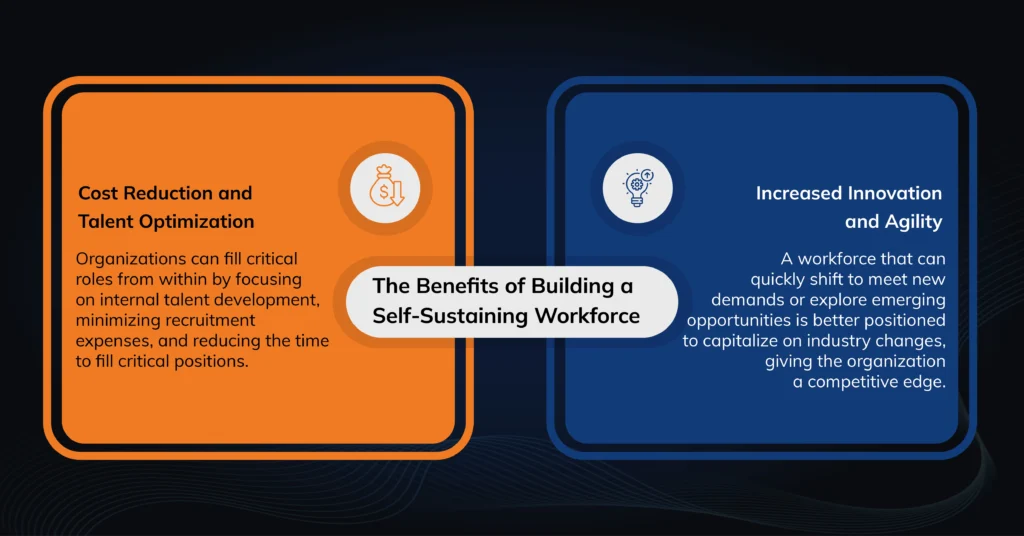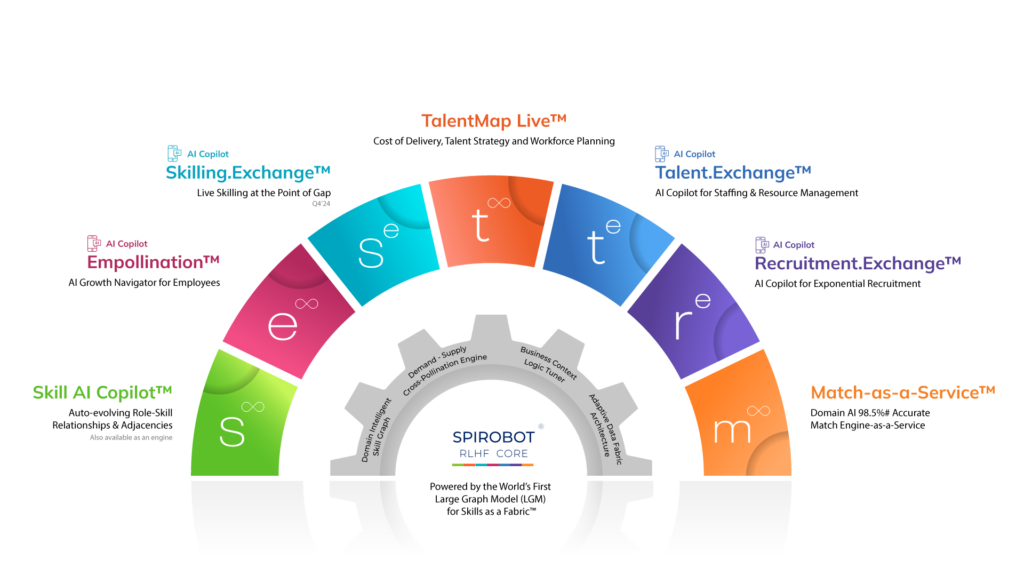As industries continuously evolve with technological advancements and shifting market dynamics, talent resilience has emerged as a critical priority for organizations aiming to stay competitive and adaptable. According to Deloitte, 85% of business executives emphasize the need for agile work structures. The ability to build a workforce that can prepare for future skill requirements is essential for ensuring long-term success. A resilient, self-sustaining workforce can swiftly align with emerging business needs, reskill or upskill as necessary, and maintain continuous growth. This workforce can adapt to market changes, embrace innovation, and address new challenges head-on. Achieving talent resilience requires an integrated, strategic approach that leverages advanced technology, data-driven insights, and a strong culture of continuous development, which is a key element in positioning the organization for sustainable growth.
In this blog, we will explore how organizations can design a self-sustaining and agile workforce with built-in mechanisms for identifying emerging skill needs and aligning talent through targeted pathways for reskilling and upskilling, ensuring long-term organizational health.
The Need for Talent Resilience
By 2025, nearly half of today’s workforce skills will become obsolete, pushing businesses to focus on future opportunities. Organizations must prioritize building talent resilience to stay competitive—developing a workforce that can quickly adapt to forecasted disruptions, acquire new skills, and pivot seamlessly into emerging roles and industries. This forward-thinking approach ensures that businesses are not just reacting to change but are proactively positioning themselves for future growth.
Building talent resilience to stay competitive—developing a workforce that can quickly adapt to forecasted disruptions, acquire new skills, and pivot seamlessly into emerging roles and industries.
Building talent resilience to stay competitive—developing a workforce that can quickly adapt to forecasted disruptions, acquire new skills, and pivot seamlessly into emerging roles and industries.
One of the main drivers of workforce resilience is the ability to anticipate future skill needs and proactively prepare employees to meet them. Organizations that remain reactive, only responding to talent shortages or market changes, often face higher costs, longer delays in filling critical positions, and an inability to fully leverage their internal talent. In contrast, businesses that invest in developing resilient talent supply chains can deploy their workforce more effectively, minimize external hiring costs, and increase employee engagement. The benefits of such investments are clear, making the case for building talent resilience even stronger.
How Spire.AI Identifies Emerging Skill Needs to Build a Resilient Workforce
A critical component of designing for talent resilience is the ability to identify emerging skill needs before they become urgent. This involves leveraging technology and real-time data to forecast industry trends, understand evolving job roles, and pinpoint the skills employees will need in the future. Without this foresight, organizations risk falling behind, unable to adapt to market changes or new technologies.
Spire.AI empowers organizations to stay ahead of skill gaps through its Large Graph Model (LGM) for Skills and Domain-Intelligent AI. These advanced technologies continuously monitor and analyze workforce data, identifying potential skill shortages and proactively recommending personalized upskilling or reskilling pathways.
Spire.AI empowers organizations to stay ahead of skill gaps through its Large Graph Model (LGM) for Skills and Domain-Intelligent AI. These advanced technologies continuously monitor and analyze workforce data, identifying potential skill shortages and proactively recommending personalized upskilling or reskilling pathways. Spire.AI’s technology enables real-time monitoring and analysis of workforce capabilities, offering unparalleled accuracy in skill profiling and demand-supply matching with a 98.5% match accuracy. By implementing such solutions, businesses can ensure they are always prepared for the next wave of industry changes, fortifying their workforce resilience.
Building Reskilling and Upskilling Pathways
The most effective way to foster talent resilience is through a robust system of reskilling and upskilling. This ensures that employees grow within their current roles and have the opportunity to develop adjacent or new skill sets that align with the organization’s future needs. However, simply offering learning programs is not enough. Organizations need to create personalized development pathways that are tightly integrated with both the employee’s career aspirations and the company’s strategic goals.
Spire.AI Domain-Intelligent AI and LGM for Skills analyzes an employee’s existing skill set, career trajectory, and the organization’s long-term talent requirements. Based on this data, it generates personalized learning recommendations and career pathways that drive continuous development.
The Role of Personalized Learning Paths
Personalized learning paths allow employees to focus on skills that will benefit their personal growth and meet the evolving demands of the business. With the help of Spire.AI’s Domain-Intelligent AI, organizations can create tailored learning journeys for each employee, ensuring that upskilling and reskilling efforts are aligned with current and future needs.
Spire.AI’s technology analyzes an employee’s existing skill set, career trajectory, and the organization’s long-term talent requirements. Based on this data, it generates personalized learning recommendations and career pathways that drive continuous development. This boosts employee engagement and ensures the organization is always equipped with the right skills to meet market demands, further enhancing workforce resilience.
Fostering a Culture of Continuous Development
Creating a self-sustaining workforce requires more than just technology; it demands a shift in organizational culture. Studies have shown that 87% of employees believe they will need to develop new skills to keep up with technological changes. To truly build talent resilience, companies must embed continuous skill development into the fabric of their operations. This means moving away from static job roles and hierarchies and fostering an environment where learning and mobility are prioritized.
Creating a Growth Mindset Across the Organization
A growth mindset—where employees and leadership are encouraged to embrace learning and change—is a key driver of workforce resilience. In organizations that promote continuous development, employees are not pigeonholed into rigid career paths. Instead, they are given opportunities to explore new roles, acquire new skills, and shift between functions. This adaptability allows the workforce to remain agile in the face of disruption and innovation.
Spire.AI plays a pivotal role in facilitating this cultural shift. By providing real-time skill gap analysis and up-to-date data on workforce capabilities, its Large Graph Model (LGM) for Skills helps businesses keep their workforce relevant and aligned with evolving industry needs. Employees, in turn, are empowered with clear growth pathways and learning recommendations that make them active participants in their development.
Aligning Talent with Business Strategy
While developing individual talent is crucial, aligning that talent with the organization’s overarching strategy ultimately creates a self-sustaining workforce. This involves continuously recalibrating roles, skills, and capabilities to match the market’s changing demands.
Spire.AI optimizes talent placement and identifies emerging skill clusters that are valuable for future business opportunities. This ensures that talent aligns with business needs, reducing talent acquisition costs by 70% while increasing operational margins by 2.5%.
Spire.AI’s Domain-Intelligent AI powered by the Large Graph Model (LGM) for Skills is particularly valuable. Continuously analyzing employee data and business needs ensures that internal talent always aligns with strategic goals. This system optimizes talent placement and identifies emerging skill clusters that are valuable for future business opportunities. This ensures that talent aligns with business needs, reducing talent acquisition costs by 70% while increasing operational margins by 2.5%. By maintaining this alignment, organizations can ensure their workforce is resilient and primed for long-term success.
The Benefits of Building a Self-Sustaining Workforce
Investing in talent resilience yields significant benefits for employees and the organization. It provides employees with continuous growth and career progression opportunities, enhancing engagement and reducing attrition. For organizations, it ensures that the workforce remains agile and adaptable, ready to meet future challenges without relying heavily on external hires. It leads to better talent utilization and a 60% reduction in time to fill critical roles.
Cost Reduction and Talent Optimization
A self-sustaining workforce reduces the need for costly external recruitment by maximizing internal talent mobility. Organizations can fill critical roles from within by focusing on internal talent development, minimizing recruitment expenses, and reducing the time to fill critical positions. Additionally, by using AI-driven tools like Spire.AI’s Large Graph Model, businesses can consistently deploy the right talent for the right roles, optimize productivity, and reduce redundancy. Organizations using Spire.AI have seen a dramatic increase in internal talent mobility from 21%-48%, reducing their reliance on agency hiring from 40% to just 0.3%, and have enabled organizations to achieve an increase in efficiency through automation.
Increased Innovation and Agility
An adaptable, resilient workforce is also more likely to drive innovation. Employees continuously learning and developing new skills bring fresh perspectives and ideas to the table, fostering a culture of innovation. Moreover, a workforce that can quickly shift to meet new demands or explore emerging opportunities is better positioned to capitalize on industry changes, giving the organization a competitive edge.
How Spire.AI Supports Talent Resilience
Spire.AI is a leader in enabling organizations to build talent resilience through advanced, AI-driven solutions. At the core of its approach is the Large Graph Model (LGM) for Skills, which maps intricate relationships between skills, roles, and industries. This sophisticated model provides real-time, actionable insights into an organization’s workforce capabilities, helping companies proactively identify skill gaps and anticipate future talent needs. By leveraging these insights, businesses can optimize internal mobility, ensuring employees are aligned with current and evolving business demands.
Additionally, Spire.AI’s Domain-Intelligent AI continuously adapts to organizational changes, providing up-to-the-minute updates on workforce dynamics. This ensures that workforce strategies remain agile and future-ready. From delivering personalized learning pathways to offering real-time skill assessments, Spire.AI equips organizations with the tools they need to build a self-sustaining, adaptable workforce.
With these capabilities, companies can foster a culture of continuous growth, making their workforce resilient and better prepared for the challenges of tomorrow.
Conclusion: Designing for Long-Term Success
Building a self-sustaining workforce is not just about reacting to present challenges but about shaping the future of work itself. Talent resilience is the foundation of this transformation, and organizations that master it will thrive in increasingly complex and competitive environments. However, workforce resilience is not solely about technology or strategy—it’s about fostering a culture of adaptability, where employees are empowered to take control of their development and contribute to the organization’s long-term success.
In this new paradigm, employees are not just resources; they are strategic partners in innovation and growth. Organizations that successfully design resilient workforces will cultivate curiosity, encourage lateral thinking, and embed a proactive mindset at every level. As we move forward, talent resilience will be a competitive advantage and the core of organizational survival, enabling businesses to pivot, grow, and lead in uncharted territories.
The organizations that invest in these capabilities today will not only mitigate disruption but will also define the future of work.







